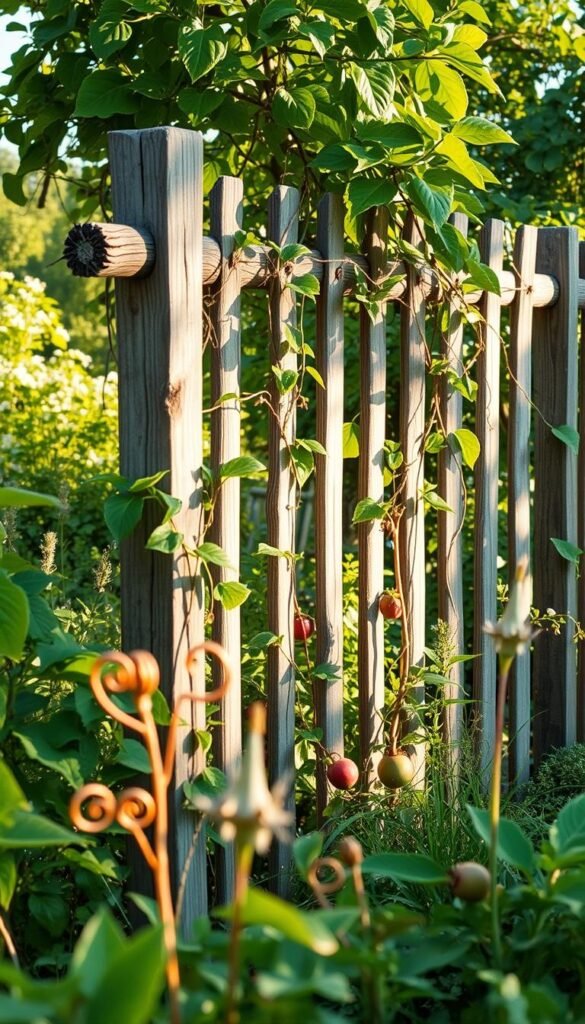Imagine nurturing plants for months, only to find nibbled leaves and half-eaten fruits days before picking. Many growers face this heartbreak when local wildlife discovers their edible treasures. Your green space deserves effective protection that respects nature while safeguarding your hard work.
Common visitors like rabbits and deer can wipe out crops overnight. Groundhogs dig under barriers, while birds peck at ripe berries. These challenges test patience, but solutions exist that blend practicality with visual appeal. The right approach depends on your location, crop types, and local animal populations.
This guide focuses on adaptable strategies rather than quick fixes. You’ll discover how proper planning prevents repetitive planting and reduces seasonal stress. We’ll explore materials that deter pests without harming ecosystems, ensuring your growing area remains both productive and attractive.
No single method works perfectly forever – wildlife adapts. That’s why combining physical barriers with smart planting techniques yields better results. You’ll learn to create layered defenses that address different entry points and feeding behaviors.
Let’s transform your outdoor space into a thriving sanctuary where plants flourish and unwanted guests stay respectfully outside. The following insights will help you establish reliable protection that evolves with your gardening journey.
Understanding the Importance of a Sturdy Garden Barrier
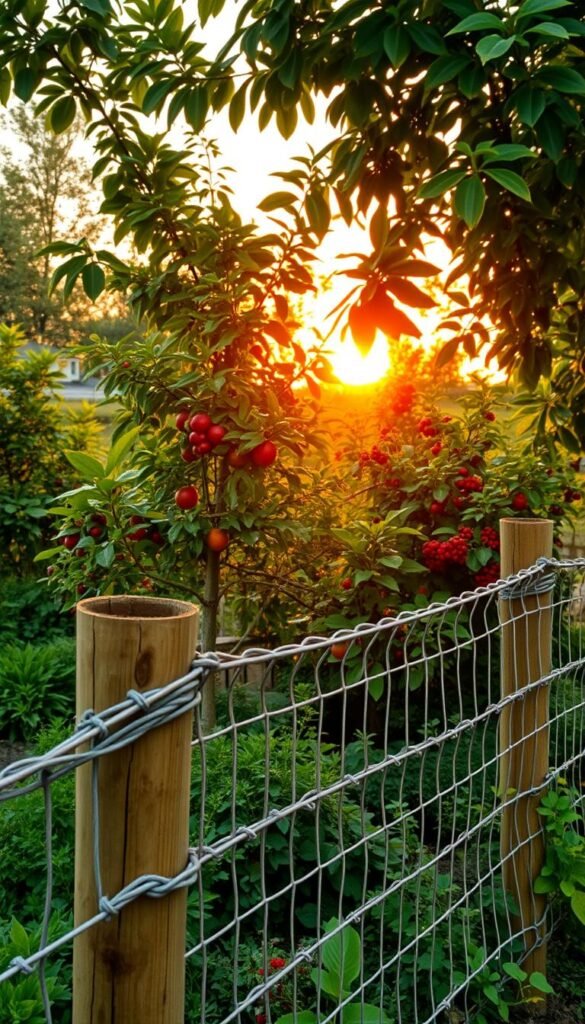
Your thriving vegetable patch becomes a buffet for local wildlife the moment crops ripen. One grower discovered this the hard way when a clever raccoon stole nine nearly ripe tomatoes overnight – a three-month wait vanished in minutes. This scenario repeats daily across backyards, where unprotected plants face constant threats.
Impact of Critters on Your Garden Produce
Four-legged visitors don’t just snack – they systematically target your best yields. Deer browse tender shoots, rabbits gnaw through stems, and birds peck perfect berries. These pests often strike when you’re days from harvest, leaving only damaged remains.
| Animal | Damage Type | Peak Activity |
|---|---|---|
| Rabbits | Stem destruction | Dawn/Dusk |
| Deer | Top growth removal | Night |
| Raccoons | Fruit theft | Late evening |
| Birds | Berry pecking | Daylight hours |
How a Quality Fence Saves Time and Effort
Effective barriers prevent endless replanting cycles. Without proper protection, you’ll spend hours replacing lost vegetables instead of enjoying fresh salads. A well-designed structure stops animals before they establish feeding patterns, preserving both your produce and gardening enthusiasm.
Consider this: each failed harvest costs more than lost tomatoes. It erodes confidence in homegrown food solutions. Strategic fencing lets you focus on growth strategies rather than constant damage control, turning your plot into a reliable food source.
Choosing the Best Materials and Techniques for Your Fence
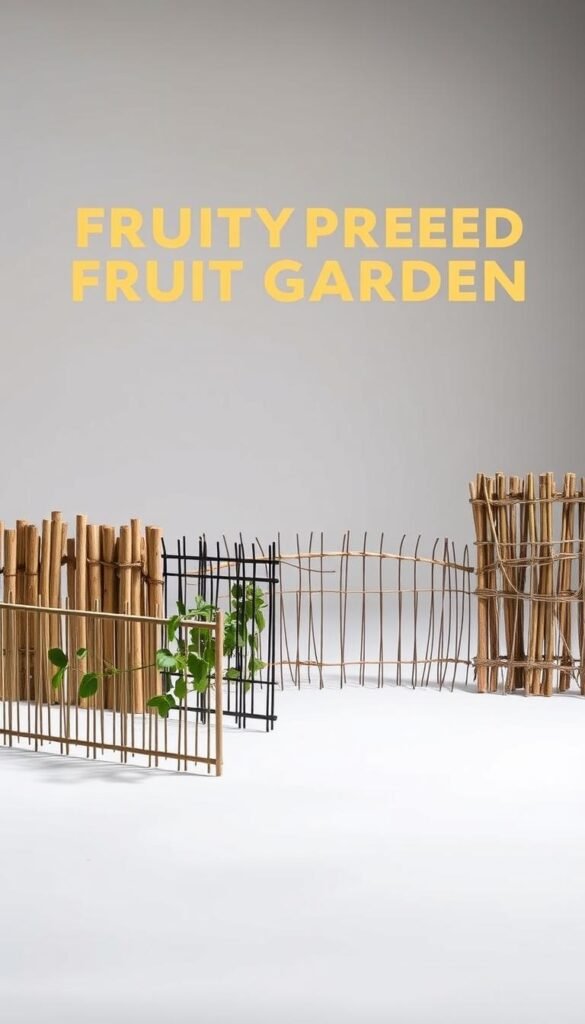
Smart material selection makes the difference between temporary fixes and lasting solutions. Let’s explore options that balance durability with practicality.
Evaluating Fencing Materials and Mesh Options
Mesh size determines which animals your barrier stops. For rabbits, choose ½” openings – their heads fit through larger gaps. Chicken wire works well for quick repairs when existing mesh proves too generous.
Wire gauge matters more than you think. Look for 16-20 gauge fencing – thinner wires bend under raccoon pressure. Vinyl-clad options from suppliers like Louis Page Fence Company resist rust better than galvanized steel, blending with green spaces.
| Material | Best For | Lifespan |
|---|---|---|
| Galvanized Steel | Budget solutions | 5-7 years |
| Vinyl-Coated Wire | Wet climates | 10+ years |
| Electric Netting | Temporary setups | Seasonal |
| Polyethylene Mesh | Bird protection | 3-5 years |
Selecting the Right Posts and Hardware
Posts anchor your entire system. Space metal posts every 8-10 feet for stability. Wooden varieties need preservative treatment – untreated pine rots quickly in soil contact.
Don’t skimp on hardware. Stainless steel brackets outlast cheaper fasteners. For gates, choose self-closing hinges and raccoon-proof latches. Premier One’s solar-powered systems show how modern tech enhances traditional fencing methods.
Height requirements vary: 3-foot barriers stop rabbits, while 8-foot fences deter deer. Match your structure’s scale to local wildlife challenges for optimal results.
Building a Backyard Fruit Garden Fence: Keeping Critters Out Naturally
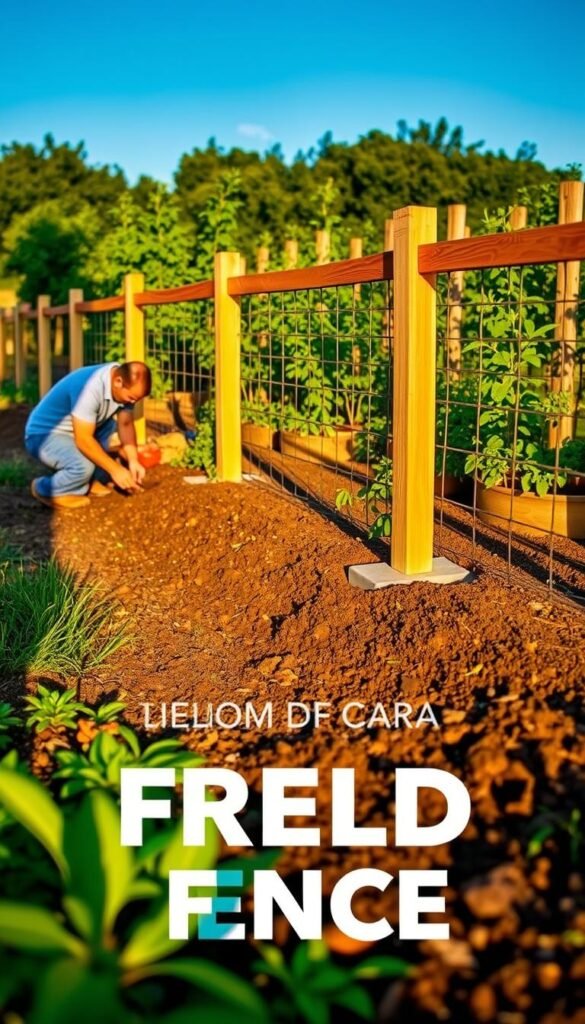
Creating a reliable perimeter starts with smart preparation and precise execution. Let’s break down the process into manageable phases while highlighting tools that make the job smoother.
Step-by-Step Installation Process
Begin by marking your space with stakes and string. Position corner posts first – these anchor points determine your fence’s alignment. Dig holes 24″ deep using a clamshell digger, ensuring posts sit below frost lines for stability.
Space intermediate supports every 8-10 feet. When attaching mesh, angle the bottom 12″ outward along the ground. This “flared apron” stops diggers like groundhogs. Leave the top 6″ unattached – climbing animals struggle with loose fencing that bends under their weight.
Essential Tools and Preparation Tips
Gather these must-haves: post level, wire cutters, and tensioning tools. Consider solar-powered electric netting for temporary setups – its low-profile design deters rabbits without blocking access.
Call 811 before digging to locate underground utilities. Check local regulations about fence heights and materials. Plan gate placements near storage areas for easy equipment access. Remember: proper corner post installation prevents sagging and maintains tension across your entire barrier.
Finish by backfilling holes with gravel for drainage. Tighten wires gradually, working from one corner to the next. Test stability by gently pushing against completed sections – a well-built structure should resist moderate pressure without leaning.
Tweaking Your Fence Design to Combat Specific Pests
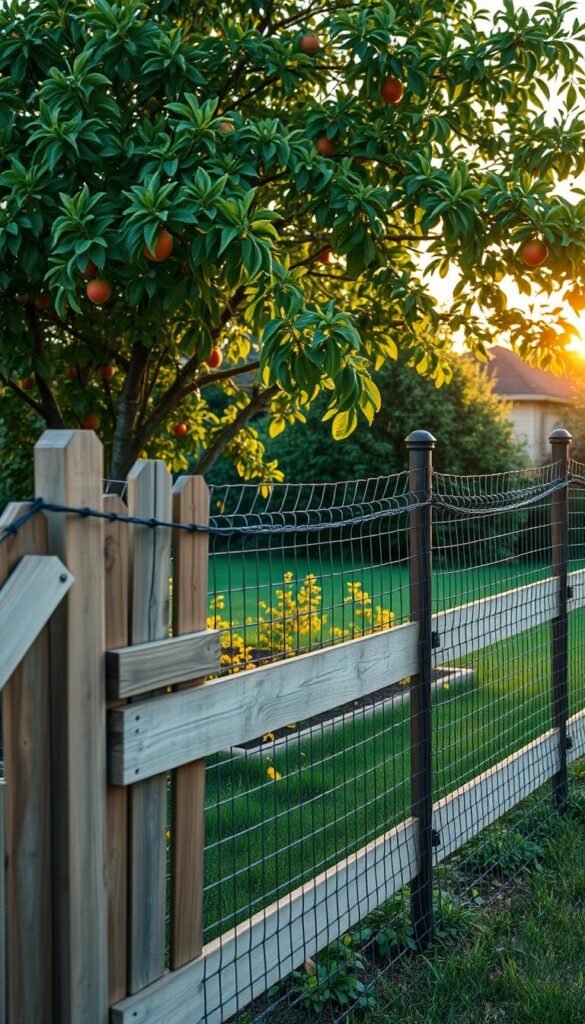
Customizing your barrier system turns good protection into unbeatable defense. While standard designs work for general threats, persistent pests demand targeted solutions. Let’s explore adjustments that outsmart nature’s most determined visitors.
Adapting for Groundhogs, Rabbits, and Smaller Critters
Groundhogs scale vertical surfaces like furry mountaineers. Bend the top 6″ of your mesh outward – this floppy section collapses under their weight. Extend the bottom edge 12″ underground in an L-shape to block their famous digging skills.
For rabbits, use ½” hexagonal wire instead of standard chicken mesh. Their narrow heads slip through larger gaps. Bury the base 6″ deep with a horizontal apron facing outward. This dual-layer approach stops both burrowing and squeezing attempts.
Modifications to Deter Larger Animals like Deer
Eight-foot heights discourage most deer, but athletic jumpers need extra measures. Install two parallel fences spaced 4 feet apart – larger animals can’t gauge the double leap. Add angled extensions at the top using bamboo poles to create unstable landing zones.
Attach Mylar ribbons 6″ above the barrier. These flash and snap in wind, disrupting deer’s cautious nature. Rotate scare tactics seasonally – what works in spring might fail during autumn’s hungry migrations.
Incorporating Additional Natural Pest Deterrents

Your garden’s defense system just got smarter with nature’s own tricks. Beyond physical barriers, clever pest control strategies work with animals’ instincts to keep them at bay. Let’s explore how to turn everyday items and natural behaviors into powerful protection tools.
Using Predator Cues and Decoys Effectively
Wildlife constantly scans for danger signs. Let your dog patrol the garden perimeter – their scent marks suggest larger predators nearby. Rotate coyote decoys monthly, positioning them near entry points animals use. Combine these with occasional predator calls from motion-activated devices for maximum effect.
Visit local barbershops for free human hair clippings. Sprinkle them around plants rabbits love, like tender lettuce shoots. Refresh after heavy rains to maintain the “danger zone” illusion pests instinctively avoid.
Organic Repellents, Herbs, and Unconventional Barriers
Plant garlic between tomato rows – its strong odor masks your crop’s scent. Mint and lavender make beautiful borders that deter nibblers while attracting pollinators. For slugs, create coffee ground moats around hostas. The gritty texture irritates their bodies, and the caffeine acts as a natural toxin.
Citrus peels decompose slowly, releasing oils that repel curious noses. Bury orange rinds near soil surfaces where groundhogs dig. Combine these methods with weekly sprays of chili-garlic solution on leaves (avoid flowering stages) for layered protection that adapts as pests evolve.
Wrapping Up Your Garden Protection Journey
With the right approach, your outdoor space becomes a sanctuary where plants thrive and wildlife respects boundaries. Effective protection combines physical barriers with nature-inspired tactics – no single solution does it all. Stay observant: what deters rabbits today might need tweaking when deer patterns change next season.
Regular checks keep defenses strong. Inspect fence lines monthly for bent wires or loose posts. Refresh natural repellents after heavy rains, and adjust hardware before winter storms. Track which vegetables remain untouched versus those needing extra care – this intel guides future upgrades.
Seasonal shifts demand different strategies. Store removable mesh during snowy months to prevent damage. Budget for replacements by comparing repair costs against lost harvest values. Remember, every tomato saved represents time well invested in your garden’s security.
You’ve now got the tools to create lasting protection that evolves with your growing space. Trust the process, celebrate small victories, and enjoy biting into fruits that made it from vine to table – critter-free.

